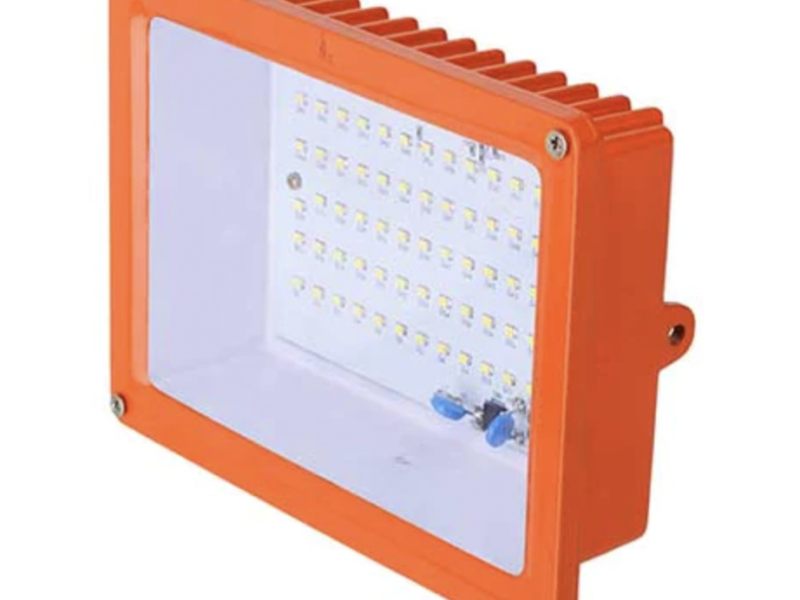The name given to flood lights is because they are excellent for flooding an area with light. They are ideal for uniform, high-intensity artificial illumination in commercial spaces, homes and properties. One of the most relatively new lighting technologies is LED floodlighting. Unlike other traditional lighting technologies like Halogen flood lights, metal-halide lights and HID lamps, LED lights emit a more powerful bright white light covering a specific, broad angle. Since LED floodlights provide a powerful bright light, they are increasingly replacing standard light bulbs in warehouses, theaters, home perimeters, manufacturing plants, stadiums and construction sites.
Consequently, below are the benefits you will get from installing and using LED flood lights to illuminate your home and commercial spaces.
1. Highly energy-efficient
LED floodlights are much more effective and highly energy efficient because they have more lumens per watt. For instance, the conventional 40-watt incandescent light bulb that you usually use at home uses 40 watts of electricity to create 490 lumens. Therefore, the efficiency of the lamp is about 12.25 lumens per watt.
On the other hand, a 40-watt LED light bulb utilizes about 6 watts of electricity to produce nearly 450 lumens. That is more than 70 lumens per watt. Thus, a LED lamp is over six times more energy efficient than an incandescent light bulb.
2. Longer lifespan
The lighting technology of LED bulbs ensures they last longer than other traditional lighting options like compact fluorescent lamps and halogen bulbs.
LED bulbs can operate between 50,000 to 100,000 hours. In comparison, the average rated lifespan of fluorescent lights is 36,000 hours, while for halogen lamps, it is about 4,000 hours.
Because LED lamps last longer, you do not have to worry about constant repair and replacement costs.
Also, when LED floodlights are nearing the end of their usefulness, they often continue working without stopping abruptly. LED lights become dark gradually, indicating that they require replacement.
3. Ecologically friendly
LED lights flood lights do not contain toxic substances like mercury and lead that pose a threat to your health and the environment. In contrast, fluorescent lights or compact fluorescent lamps use mercury, making them a health risk when broken or improperly discarded.
Moreover, because LED lights are more than 95% recyclable, they can help reduce your carbon footprint.
The longer lifespan of LED floodlights also assists in saving a lot of materials that may have gone towards producing numerous incandescent light bulbs.
4. Long-lasting quality
LED lights are highly durable because their manufacturing involves sturdy materials. The design of LED lamps ensures they have rugged components, vital for withstanding extreme weather conditions, shocks and vibrations.
Since you are to install LED lights outdoors, you do not have to worry about their exposure to extreme heat, cold, wind and rain. Even when the weather is freezing, LED lamps operate optimally.
5. Emit intensely bright light
LED technology produces intensely bright white light, similar to daylight. LED bulbs effectively convert their energy into light. In comparison, incandescent light bulbs emit a muddy orange hue and waste a considerable percentage of energy as heat.
Because LED floodlights produce bright white light, illuminating targeted areas, they are commonly used in stadiums, making spectators feel like it is daytime.
LED lights should be your automatic choice of lighting if you need brighter illumination and want to save energy and protect the environment.
6. Highly flexible design
There are different types of LED lights that you can use depending on the area that requires bright light illumination. Because of the design flexibility, they can be so small or so big, allowing you to use them as circuit board indicators, to make Christmas lights or illuminate your shop or a major league football stadium.
The design flexibility exhibited by LED lights also allows integration with motion sensors. Motion sensors enable the LED floodlights to switch on and off depending on automatic movement detection.
7. Low voltage operation
LED lighting is also excellent because it can function as usual when experiencing a low-voltage power supply. Therefore, you can use solar energy to power LED lights, especially in rural or remote locations.
Since LED lights run on a low-voltage power supply, they are safer when you are in an area with frequent flooding. If you or your staff touches an electrical component mistakenly during water damage cleanup and restoration, there will be no harmful or severe shocks.



